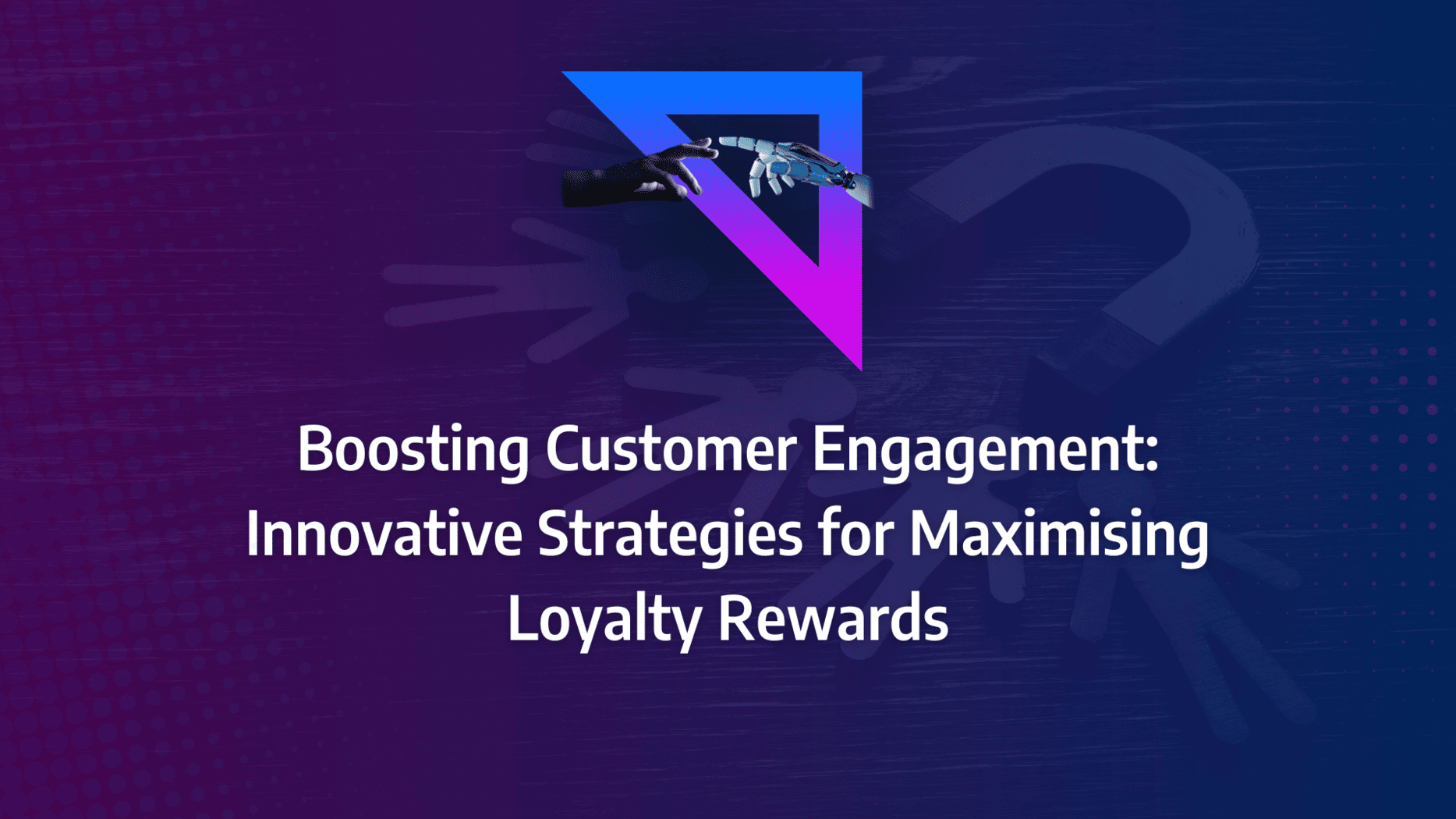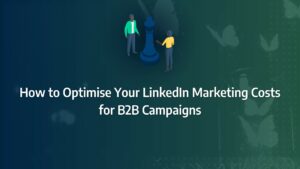Retaining customers is more crucial than ever. Yet, many businesses struggle to find effective strategies to keep their customers engaged beyond the first sale. That’s where loyalty rewards programs come into play, offering a dynamic solution to build long-term relationships and increase repeat business. But how do you create a loyalty program that truly stands out and delivers measurable results? In this blog post, we’ll dive into innovative strategies, such as tiered loyalty structures and personalised rewards, that can transform your customer engagement efforts.
- Leverage tiered loyalty programs: Implement loyalty models that reward higher engagement levels with premium benefits and exclusive perks, motivating customers to invest more in your services.
- Utilise personalised rewards: Use customer data to tailor rewards based on client preferences, ensuring that each customer feels valued and engaged in a way that drives repeat purchases.
- Incentivise referrals: Launch a referral program where both referrers and new clients benefit from rewards, creating a cycle of growth and engagement that maximises brand advocacy.
- Deploy bonus points campaigns: Offer time-limited or milestone-based point campaigns to encourage immediate purchases and continued customer engagement.
- Introduce cashback incentives: Give customers the option to earn cashback on their purchases, adding a financial benefit to their loyalty and increasing the likelihood of repeat business.
- Use exclusive access as a reward: Provide loyal customers with early or exclusive access to premium services, enhancing their experience and encouraging ongoing engagement.
- Focus on customer retention through strategic loyalty initiatives: Ensure your loyalty programs are designed to drive long-term growth, with a focus on increasing repeat purchases and building deeper customer relationships.
What Are Loyalty Rewards?
A B2B loyalty programme is designed to reward businesses for their ongoing partnership, fostering customer engagement and loyalty while driving repeat purchases. Unlike traditional loyalty schemes targeted at consumers, B2B loyalty programmes focus on cultivating enduring relationships between businesses.
These programmes are built around a variety of strategies that not only retain customers but also encourage growth and deeper collaboration. Key features of innovative loyalty programs include:
- Tiered Structures: The more a business engages or makes purchases, the higher the tier they reach, unlocking additional benefits. Higher tiers may grant access to premium services, increased discount rates, or priority support. This motivates businesses to increase their engagement and investment in the partnership.
- Rewards and Points: Earn points for purchases, which can be redeemed for a variety of loyalty rewards. This model provides a tangible benefit to ongoing loyalty, with rewards ranging from discounts to complimentary products or services, encouraging continuous purchasing behaviours.
- Cashback Incentives: Businesses can receive a percentage of their spending back to use on future transactions. This immediate financial benefit makes ongoing collaboration more attractive, particularly for companies looking to reduce costs without compromising on quality.
- Exclusive Offers: Loyal customers can access unique services, special pricing, or exclusive products. These bespoke benefits not only provide a competitive edge but also enhance the feeling of being valued, further strengthening customer engagement & loyalty.
What Is the Difference Between B2B and B2C Loyalty Programs?
It is critical to recognise the distinct differences between B2B rewards programs and B2C loyalty schemes, as each is designed with different goals and audiences in mind. Here’s how they compare:
- Membership Focus: B2B loyalty programmes are centred on fostering long-term partnerships with businesses, whereas B2C programmes are designed for individual consumers, aiming to encourage frequent, immediate purchases.
- Programme Structure: B2B initiatives often include tiered structures and highly personalised services, tailored to meet the specific needs of a business. In contrast, B2C programmes tend to rely on simpler points systems, discounts, and general rewards, designed to appeal to a broader customer base.
- Rewards and Offers: For B2B rewards programs, the benefits might include access to advanced product features, extended customer support, or discounts on bulk purchases. By comparison, B2C programmes typically focus on offering small discounts, free products, or other promotions.
- Level of Personalisation: B2B programmes excel at offering a high degree of personalisation, taking into account the unique objectives and needs of each business partner. While B2C programmes can offer some degree of personalisation, their focus remains largely on general consumer segments rather than the more tailored approach needed in a B2B rewards program.
- Data Utilisation: Data collection plays a pivotal role in both programme types, but the focus differs. B2B loyalty programmes gather in-depth data on business operations, procurement patterns, and service usage to tailor future offers. B2C programmes, on the other hand, analyse consumer preferences and shopping behaviour to refine marketing strategies and customer engagement & loyalty efforts.
What Matters Most?
Aligning your loyalty programme with broader business objectives can significantly enhance its impact. Clients often discover that a tiered approach not only rewards purchases but also fosters engagement, creating a deeper bond with their customers. Leveraging predictive analytics allows for proactive intervention with at-risk customers, helping to sustain loyalty. Typically, incorporating customer feedback into your programme design ensures it evolves with changing expectations, reinforcing the value you deliver.Get In Touch
What are the 4 levels of loyalty?
Stage 1: Cognitive Loyalty
Cognitive loyalty is often regarded as the weakest form of consumer loyalty because it is driven primarily by price comparison. At this stage, customers make decisions based on the perceived cost-to-benefit ratio of a product or service. If a competitor offers a better deal, customers are likely to switch, as their loyalty is not deeply rooted in the brand itself but in the price.
This is why some businesses are prepared to take a loss on the initial sale to win the cognitive loyalty game—knowing that attracting a customer with a lower price can lead to repeat business if handled correctly.
Earning Cognitive Loyalty as a Business Owner
To succeed in winning cognitive loyalty, it’s essential to keep a close eye on competitors and offer better value where possible. If lowering the price further would lead to unsustainable losses, consider offering free delivery or an attractive discount on the next purchase.
Immediate availability and a demonstrable value proposition are crucial here. Customers are more likely to feel trust and satisfaction when they can see clear, tangible benefits—such as a superior product at a competitive price—without delay. Building cognitive loyalty is a key step in the overall journey towards customer engagement & loyalty.
Stage 2: Affective Loyalty
Affective loyalty marks a shift in the consumer’s mindset, where they begin to associate positive feelings with a brand. At this stage, the brand is not just recognised; it is slightly preferred over competitors due to the satisfaction derived from previous interactions.
Affective loyalty is built by aligning brand attributes and services with customer expectations. This connection is vital because customer satisfaction is often closely linked to how well their expectations are met, and businesses must be acutely aware of this psychological phenomenon.
Earning Affective Loyalty as a Business Owner
At this point, your marketing department plays a significant role. Providing high-quality services alone won’t be enough—customers need to remember who provided that service and how well they felt afterwards. Engaging marketing tactics, such as distinctive branding, clever use of logos, memorable advertising campaigns, and personalised follow-up emails, can strengthen this emotional connection.
For example, if a customer leaves a bank with a complimentary cup of coffee, that small gesture will stick in their memory. It’s about creating an experience where your brand is associated with comfort, collaboration, and contentment—moving from simply being recognised to being preferred in the customer engagement & loyalty journey.
Source: HBR
Stage 3: Conative Loyalty
Conative loyalty is a deeper, more committed form of affective loyalty, characterised by a customer’s strong desire to purchase from a specific brand repeatedly. It is typically developed after several successful interactions with the brand. According to Heiner Evanschitzky, a professor at Aston Business School, conative loyalty is marked by three critical behaviours:
- Willingness to recommend the brand
- Intention to cross-buy across product lines
- Commitment to repurchasing
However, even at this stage, the customer may still be tempted by competitor offers. Conative loyalty does not fully eliminate the possibility of switching brands, particularly if a significant market shift occurs.
Earning Conative Loyalty as a Business Owner
By now, you’ve established trust and built a loyal customer base. The key challenge is retaining them. Strategies for maintaining conative loyalty include offering loyalty cards, exclusive loyalty rewards, early access to new products, or additional features like navigation apps.
Regular discounts, special offers, and continued attention to customer needs will keep them engaged. Businesses typically lose conative customers due to two main reasons: the emergence of a game-changing competitor or their own shortcomings, such as poor customer service or delayed delivery.
Stage 4: Action Loyalty
Action loyalty represents the pinnacle of the loyalty ladder. At this stage, consumers identify strongly with a brand, viewing it as an extension of their personal, social, or financial identity. This loyalty goes beyond mere intention to purchase—customers have developed a habitual connection with the brand, associating it with specific product categories.
For example, consumers think of L’Oreal when it comes to cosmetics, Chicco for maternity clothing, and Apple for phones and computers. This strong association results in customers proactively promoting the brand through word-of-mouth, providing an organic method of customer engagement & loyalty.
Earning Action Loyalty as a Business Owner
Building action loyalty means embedding your brand so deeply in the consumer’s psyche that they naturally associate your products with specific needs. Achieving this level of loyalty requires consistent quality, strong brand values, and maintaining customer satisfaction over time.
To cultivate action loyalty, businesses must continue to invest in personalisation and keep their finger on the pulse of customer needs. At this point, you are not just selling products—you are selling an identity that resonates with the consumer’s values and lifestyle.
What type of reward programs do you recommend for small businesses?
Tiered Loyalty Programme
A tiered loyalty programme structures benefits across different levels, offering greater rewards to customers as they ascend through the tiers. Typically, these tiers are named after precious metals like silver, gold, and platinum, or other similar categories, to motivate customers to engage more with the business. The higher the tier, the greater the loyalty rewards customers can enjoy, such as exclusive services or enhanced discounts.
For instance, B2B rewards programmes like those offered by Hilton or American Airlines allow customers to sign up for free and earn progressively greater benefits as they make additional purchases. As they spend more, they climb higher through the tiers and unlock enhanced loyalty rewards over time, such as free upgrades or priority access to services.
Subscription-Based Loyalty Programme
A subscription-based loyalty programme requires customers to pay a regular fee—monthly or annually—to access certain benefits. This model is particularly useful for organisations looking to secure customer retention over a defined period, by offering continued value in return for the subscription fee.
A prime example is Amazon Prime. This paid service provides members with free shipping, as well as access to an array of other benefits such as TV shows, music streaming, and product recommendations. By consistently delivering value, this innovative loyalty program ensures that customers feel they are getting significant benefits in exchange for their ongoing financial commitment.
Value-Based Loyalty Programme
Unlike traditional loyalty rewards programmes, a value-based loyalty programme doesn’t necessarily offer tangible rewards like discounts or perks. Instead, it focuses on aligning with the customer’s values. The goal here is to establish a deeper emotional connection by promoting shared values between the business and the customer.
For example, businesses running value-based programmes often pledge to donate a portion of their proceeds to a charity or social cause. Customers can choose which charity their purchase will support, fostering a sense of shared purpose. This type of b2b rewards program can be particularly effective for organisations looking to build stronger connections through shared values, ensuring greater customer engagement & loyalty.
Points-Based Loyalty Programme
A points-based loyalty programme is one of the most popular models, particularly in retail and hospitality sectors. Customers earn points for each purchase they make, and once they accumulate enough points, they can exchange them for a product, a service, or a discount.
For example, Chipotle operates a points-based system where customers receive points for every purchase. Once they have collected enough points, they can redeem them for free food or exclusive merchandise. This model encourages frequent purchases and provides immediate, tangible loyalty rewards that drive customer engagement & loyalty.
Mission-Driven Customer Loyalty Programme
In a mission-driven loyalty programme, the focus shifts away from offering direct loyalty rewards and instead promotes a sense of purpose. Customers feel that their engagement with the brand is contributing to a greater cause or making a difference in the world.
A compelling example of this is the loyalty programme launched by Whereby, which plants a tree for every video meeting hosted on their platform. Their initiative highlights the importance of living a climate-positive lifestyle, and customers feel that their participation in the platform is part of something bigger, fostering a sense of contribution and meaning.
Refer-a-Friend Loyalty Programme
The refer-a-friend loyalty programme is a straightforward but effective strategy. This programme rewards existing customers for bringing new clients into the fold. Typically, both the referrer and the referred individual receive discounts or other perks, creating a win-win situation.
Mahabis offers a good example of this strategy. Their programme gives a 10% discount to U.S.-based customers and their referred friend, while UK customers receive a £10 discount. This model encourages customers to actively promote the brand, resulting in increased customer engagement & loyalty through peer-to-peer recommendations.
Our Tactical Recommendations
Creating emotional connections through compelling customer success stories can significantly enhance your loyalty programme’s effectiveness. Clients often discover that gamification strategies not only make the programme more engaging but also encourage participation through competition. Tracking performance continuously is vital; this allows for real-time adjustments that ensure the programme remains relevant and effective in driving customer loyalty.Get In Touch
How do I create a loyalty rewards program?
Building a successful loyalty rewards programme requires careful planning and an understanding of your customer base. This step-by-step guide will walk you through the key considerations for designing and launching a programme that drives long-term customer engagement & loyalty.
Study Your Current Customers
Understanding your customers is the foundation of any effective B2B rewards programme. Start by asking yourself the following questions:
- How much does each customer spend annually?
- What types of products do they buy, and how often do they make purchases?
- How long have they been with your business?
- Can you cross-sell or up-sell additional products to them?
- Do they buy from your competitors? If so, who are they?
- How profitable are their purchases?
- How quickly do they pay?
- How satisfied are they with your company?
- What improvements could you make to strengthen the business relationship?
By answering these questions, you’ll gain insights into which customers would benefit most from your loyalty rewards programme and how you can tailor it to encourage greater engagement.
Choose How to Reward Your Members
The rewards you offer are the key motivator for customers to participate in your programme. Avoid the common pitfall of assuming customers only care about earning points. In reality, it’s the loyalty rewards themselves that drive excitement and retention.
Offer a variety of rewards that will appeal to your customers. Think about what would incentivise you: Would you be thrilled by a 5% off coupon when you regularly see 25% off sales? Probably not. Make sure your rewards are compelling enough to inspire genuine loyalty. The goal is to provide a tangible and desirable reason for customers to keep engaging with your business over time.
Source: Antavo Loyalty Cloud
Prepare Your Customer Loyalty Programme
Before launching your programme, take time to assess your customers’ current levels of satisfaction. Use surveys, interviews, and customer feedback to identify areas where improvements can be made. This process will help you design a programme that resonates with your customers and addresses their needs.
Additionally, make sure you have the right team in place. Identify employees who are skilled in customer interactions and ensure they are well-prepared to support the programme. Focus on customers who purchase frequently but have the potential to increase their profitability. If your sales cycle is particularly long—more than three years, for example—this type of programme may not be the most effective strategy for your business.
Set Goals and Measure Them with CRM
Defining clear goals is essential to the success of your B2B rewards programme. Establish specific, measurable objectives from the outset. For instance, if your customers typically make three purchases per year, set a goal to increase that to 3.3 purchases annually. This modest growth can lead to a 10% increase in sales with minimal additional expense.
To track progress, use a CRM (Customer Relationship Management) system to manage and monitor the programme. If you’re working with a tight budget, there are many low-cost or free CRM solutions available that can still provide robust tracking capabilities.
Set a Budget
Establishing a clear budget is crucial for both customer retention and new customer acquisition efforts. Consult industry benchmarks to determine a reasonable budget for managing your loyalty rewards programme, and adjust accordingly if you’re aiming for above-average growth. Remember, it’s important to invest not only in retaining current customers but also in developing strategies to attract new ones.
Decide Which Customers to Target
With your customer analysis in hand, categorise your customers according to specific criteria that match your business objectives. Consider the following when prioritising:
- Purchase volume
- Potential to purchase more products or services
- Speed of payment
- Overall profitability
- Loyalty over time
By focusing on these factors, you can tailor your innovative loyalty programmes to reward the most valuable customers and encourage others to increase their engagement.
Launch and Promote Your Programme
Once your loyalty rewards programme is ready, you need to ensure that customers are aware of it. A well-designed explainer page is an effective way to communicate how the programme works. Use concise language and clear visuals to show customers how they can earn and redeem points.
Social media, emails, and other marketing channels should also be leveraged to promote the launch. Announce the programme to your current customer base, and use targeted campaigns to reach potential new members. Whether you’re promoting a bonus points event or simply highlighting the benefits of joining, these channels are essential for building awareness and driving customer engagement & loyalty.
Ensure the Success of Your Loyalty Programme
To make sure your programme is a success, follow these critical steps:
- Build an explainer page: This should clearly demonstrate how customers can earn and redeem points.
- Launch your programme: Address any early feedback from customers to refine and improve the programme.
- Send an email announcement: Notify your customers that your programme has launched and explain the benefits.
- Leverage social media: Use your existing marketing channels to promote the programme and reach new participants.
By focusing on these steps and ensuring your rewards are enticing, your loyalty rewards programme will effectively engage customers and drive long-term loyalty.







